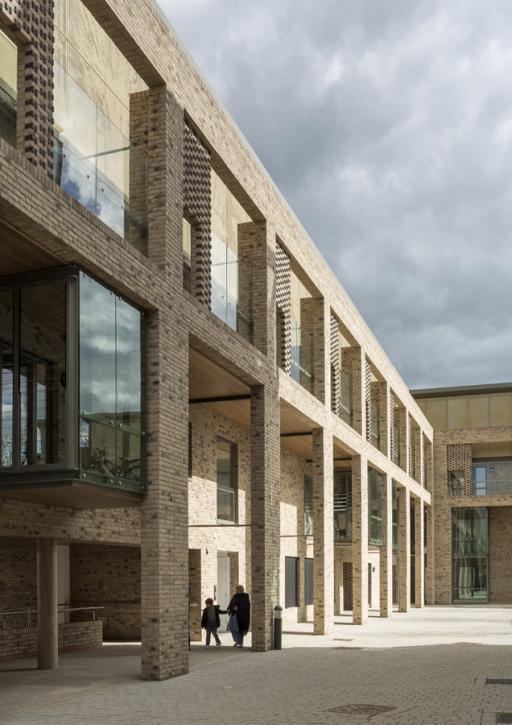Abode at Great Kneighton - a major new housing scheme designed by Proctor and Matthews Architects for Countryside Properties - has won a 2012 Housing Design Project Award.
Abode at Great Kneighton comprises 306 sustainable new homes, and forms part of a major new housing and mixed use community currently being developed by Countryside Properties in the Cambridge Southern Fringe growth area. The scheme, which gained planning consent in 2011 and is currently under construction, is part of a larger development that will provide up to 2,250 new homes, extensive strategic open space, accompanying provision of education facilities, sports and recreation, health and community facilities and local shopping facilities.
Stephen Proctor, director at Proctor and Matthews said:
“We are delighted that Proctor and Matthews have once again been recognised by the Housing Design Awards. Great Kneighton is one of our most important projects to date and we have enjoyed working with Countryside Properties, with whom we have a great track record of creating successful, sustainable communities.”
Tony Travers, Managing Director of New Homes and Communities division at Countryside Properties said:
“Abode illustrates our long-standing commitment to commissioning good design and this award is a significant addition to the public recognition that our developments have received. We congratulate Proctor and Matthews on achieving a design that draws attention to the importance of Great Kneighton to the Cambridge area and raises public awareness of the need to create great places for residents.”
The Housing Design Awards judges were impressed by Proctor and Matthews’ approach to the large site, and in particular their use of a hierarchy of spaces and housing types to suit different parts of the development. At Great Kneighton, where 40% of the new homes will be affordable housing, residents and visitors will experience a transition towards a more relaxed architectural language that eventually blends into open countryside at the edge of the site.
At the entrance to the site, a “Great Court” - inspired by Cambridge colleges - contains large marker buildings, and makes use of existing road infrastructure to gives a formal sense of arrival. Immediately behind this, a series of mews streets contain three-storey terraced houses with generous private outside space and extensive new planted areas that run across the development. A further transition takes place at the rear of the site: here a “Green Lanes” zone contains clusters of detached two and three storey houses, arranged to create a more domestic, village-style atmosphere. Again, each house has generous private outside space, and communal areas are also well-planted to create a sense of “rural erosion” as the hierarchy of buildings and spaces shrinks further at the edge of the site, finally dissolving into open countryside.
The judges also noted the use of a simple and controlled palette of materials across the development. All buildings will share a base palette of “Cambridge” stock brickwork, and will be highlighted with panels of textured brick. Elsewhere materials are used to illustrate the hierarchy of building types: the formal Great Court, for example, will be animated in places with perforated metal cladding, back-lit at night to create a ‘halo’ around the courtyard and enhance the sense of arrival. Meanwhile, houses in the “Green Lanes” will have horizontal black boarding at first floor levels and red clay traditional tiles, referencing local vernacular buildings and providing a softer edge to the development.


